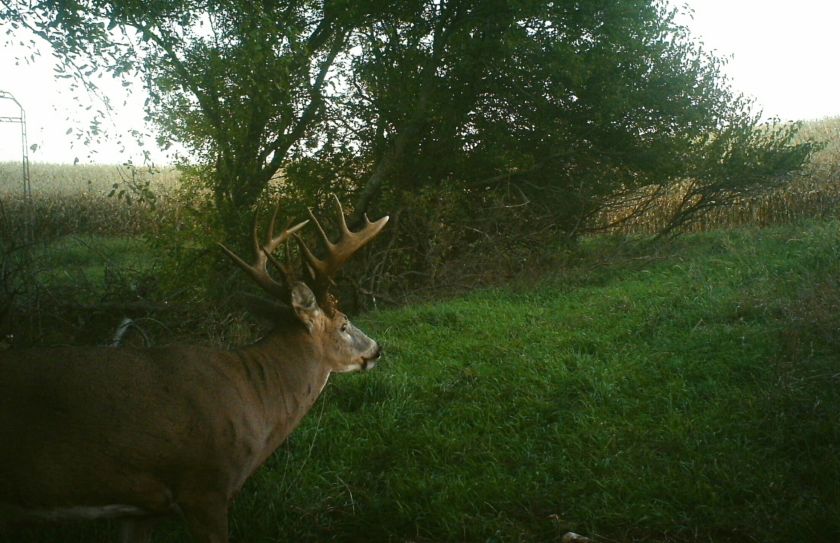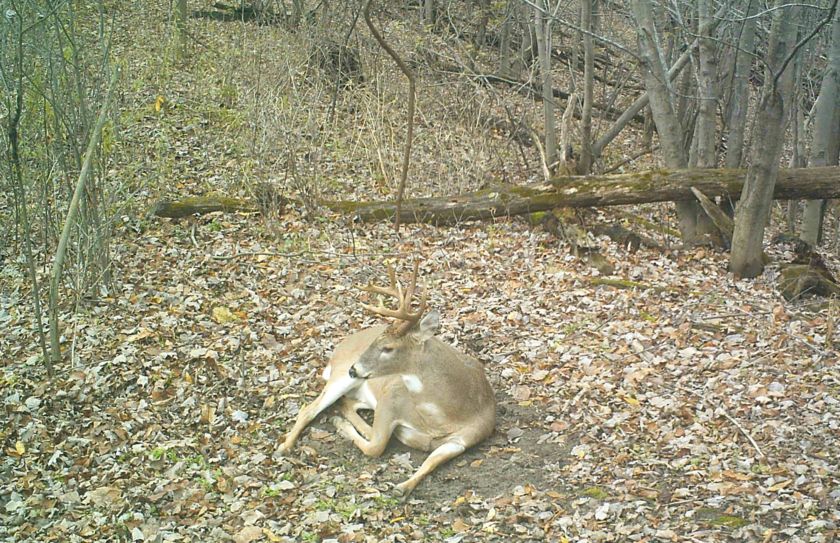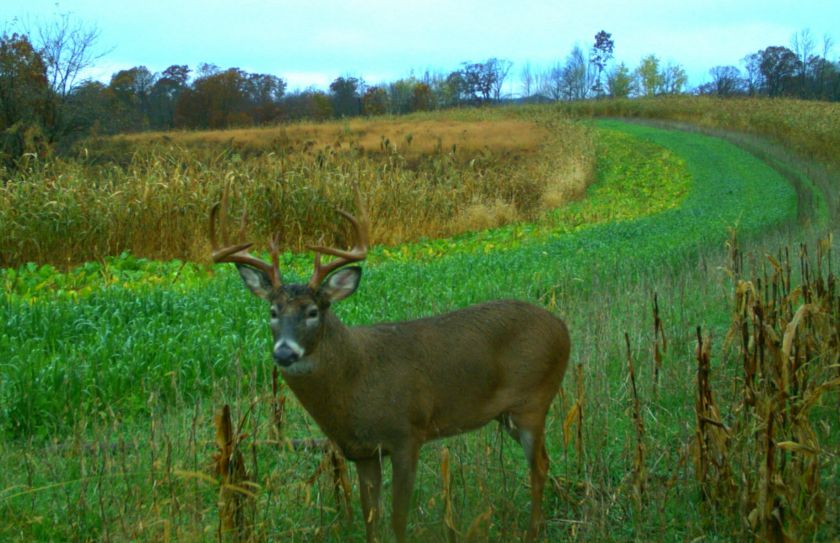The desire to create the whitetail parcel with the highest level of attraction in the area can sometimes produce both good and bad results. The key is creating a level of habitat attraction that successfully interlaces with your access and hunting efforts. Drawing more whitetails to your parcel with habitat improvements in the form of food plots, bedding areas, waterholes, etc, can often lead to clashes between hunting efforts and secure habitat that ultimately reduce the properties attraction to deer.
Jeff recently visited a client, whose neighbor had developed a large food plot without considering how his access and hunting efforts would influence the deer movement and utilization of his new plot. Unfortunately for the neighbor, his access and blind located on the large food plot will undoubtedly have negative impacts on the improvement he expected to create a high level of whitetail attraction. While his food plot may still support local doe family groups and young bucks that will tolerate a bit of human interference, mature bucks will not be likely to feel confident enough to use the food plot during hunting hours, if at all.
When developing a food source that you plan to hunt over, it’s critical to bear in mind how and when you will be able to hunt it. The video above illustrates the vast amount of thought and strategy that goes into a successful whitetail kill plot.
It’s extremely important to tactfully create a level of attraction for whitetails on your parcel that is complementary to how you will hunt the property. No attractions should invite deer to be spooked. The following 3 categories of habitat improvements should create long lines of whitetail movement so that you can effectively enter, hunt, and exit your property without spooking deer and compromise your potential for a high level of whitetail attraction.
High Attraction Food Plot Sanctuaries
When most people picture a highly attractive whitetail parcel, they imagine it has deer sanctuaries that are void of human interference. Typically, bedding areas are the main area of deer sanctuary interest. While yes, it is important for deer to feel safe in their bedding areas, their food sources should also offer the same sense of security. Far too many hunters create bedding area sanctuaries, but no food source safe zones. By hunting their most significant sources of food, deer, especially mature bucks will not feel safe feeding on them during shooting hours. The afternoon feeding movement is an extremely important phase of a whitetail’s daily cycle. The destination food source they head towards before dark should be a sanctuary. Those hidden, secure food sources become a staple attraction on a successful whitetail parcel. No hunter access or stand location should compromise the sanctity of those food sources. Instead, the travel corridors between bedding and food will offer the safest and most productive stand locations.
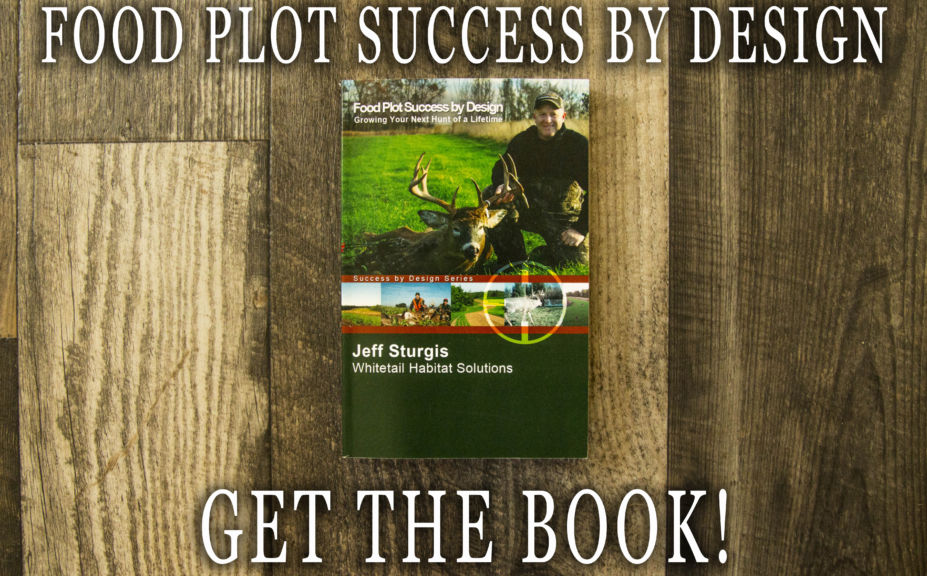
If you're interested in learning the ins and outs of successful food plots, be sure to pick up Jeff's Food Plot Success by Design Book.
Bedding Areas for High Attraction Parcels
Bedding areas that offer a high level of attraction for deer are another cornerstone for a successful whitetail parcel. Bedding areas that are truly “All Deer, All the Time” will be the most valuable. These hidden sanctuaries should be strategically located so that bucks and does can segregate. This ensures that there is enough room for both mature bucks and doe family groups while creating the opportunity for cruising areas between the bedding pockets. It’s imperitive that these bedding areas are true sanctuaries during the season to generate the highest level of attraction for your parcel. Hunter intrusions in these areas will compromise your properties attractiveness to mature bucks. To learn more about the strategies behind attractive buck and doe bedding, checkout “Buck and Doe Bedding Locations...why here, and why there?"
The following video illustrates a system of bedding areas, travel corridors and stand locations we created that will compliment one another to limit the risk of spooking deer while increasing the likelihood of a mature buck encounter next fall.
Waterholes, Mock Scrapes, and Minerals Strengthen Parcel Attraction
Long lines of movement on an attractive whitetail parcel offer the best opportunities for stand locations. Gaps between the sanctuaries of bedding and food sources are typically excellent for defining deer movement with travel corridors. Strengthening movements on these corridors can be done using several easy methods of attraction. Waterholes, Mock Scrapes, and Mineral Sites can all become more pit stops in a whitetails daily cycle. These improvements are perfect for increasing the value of stand locations while reducing the pressure on sanctuary food sources and bedding areas, so long as the access to the stand locations do not allow for hunter sight, smell, or sound to reach deer. It’s typically best to spread these improvements so that they are not all located at one stand location. These attractions too, should be placed where encounters between deer and hunter only happen discretely. Stand locations should just get a peak into the movement, rather than intruding on it.
A good example of attractions that hinder their ultimate potential are poorly placed mineral sites. It’s very common for people to leave mineral sites or feeders behind their hunting cabins. While deer will frequently visit them at night, rarely will anything but does or young bucks appear before dark. This is because deer are spooked repeatedly, so they have compromised levels of attraction. For advice and strategies on successful mineral sites, check out, Advanced Deer Mineral Strategies: Defining Deer Movement.
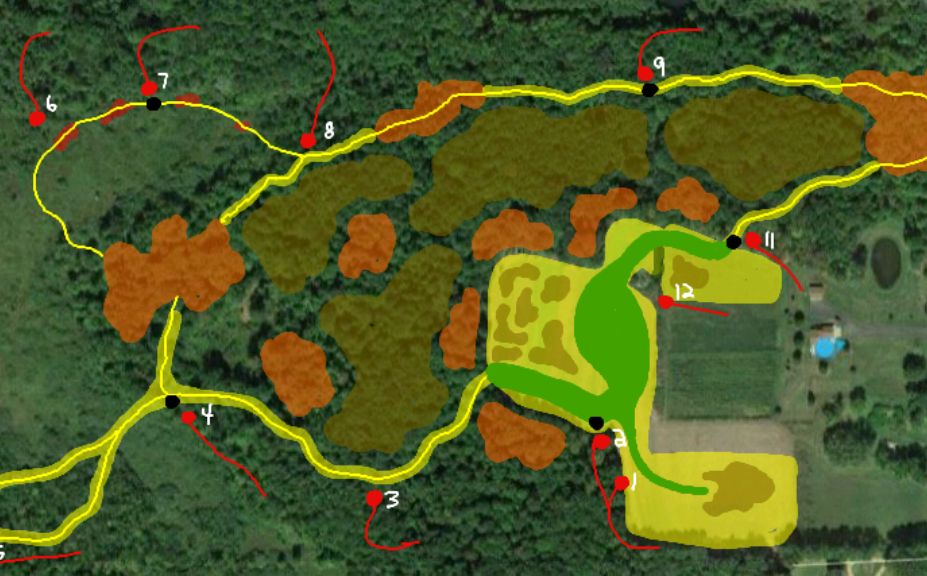
In the property design above, you'll see how habitat improvements and stand locations can work as a cohesive system to maintain deer sanctuaries, while creating long lines of deer movement that in turn produce high value, low risk stand locations. If you'd like to learn more about Whitetail Habitat Solution's consulting services, click here.
Conclusion
If you’re hoping to increase your properties level of attraction, be sure that you aren’t also increasing the risk of spooking deer. No improvements should jeopardize sanctuaries by inviting deer to be spooked. By strategically improving portions of your property so that your access and hunting efforts are screened from deer, you can achieve a highly attractive parcel. Its important though, to keep in mind that a highly attractive parcel still has to offer opportunities for mature buck encounters. By spreading your improvements to create long lines of movement and strengthening those movements with waterholes, mock scrapes, or minerals you will be rewarded with stand locations that are attractive to deer, but reduce the risk of spooking them. High attraction whitetail parcels can sometimes undermine themselves if hunter access is not taken into consideration before the improvements are made, so be sure to plan ahead. If effective hunting access is something you'd like to learn more about, I recommend you read, Predatory Access-Chapter 19 Of My Book, "Whitetail Success By Design"
By Jeff and Dylan
